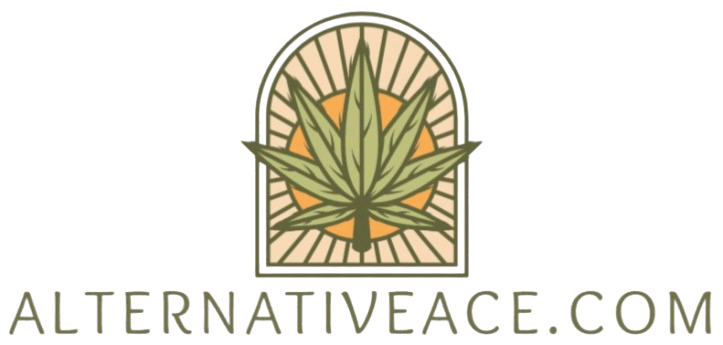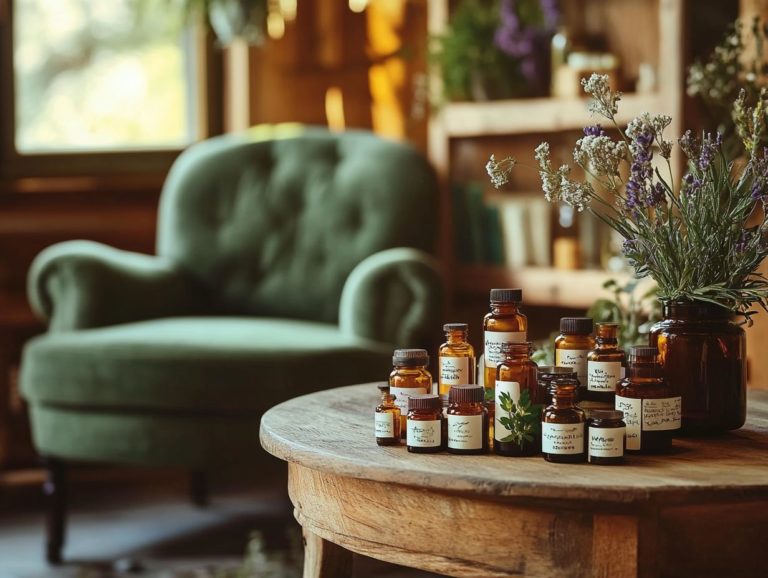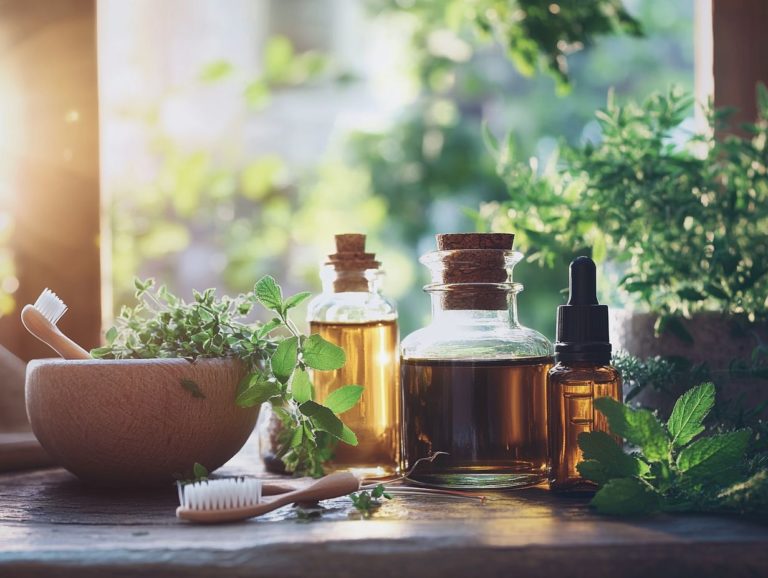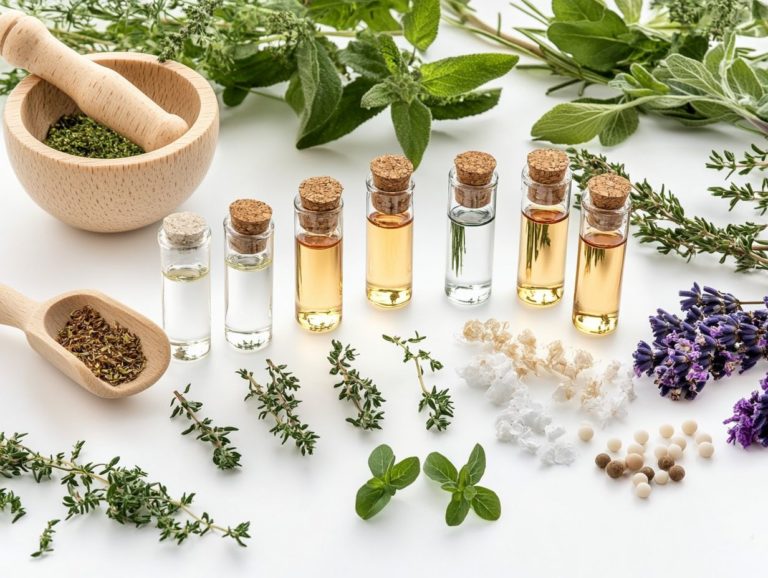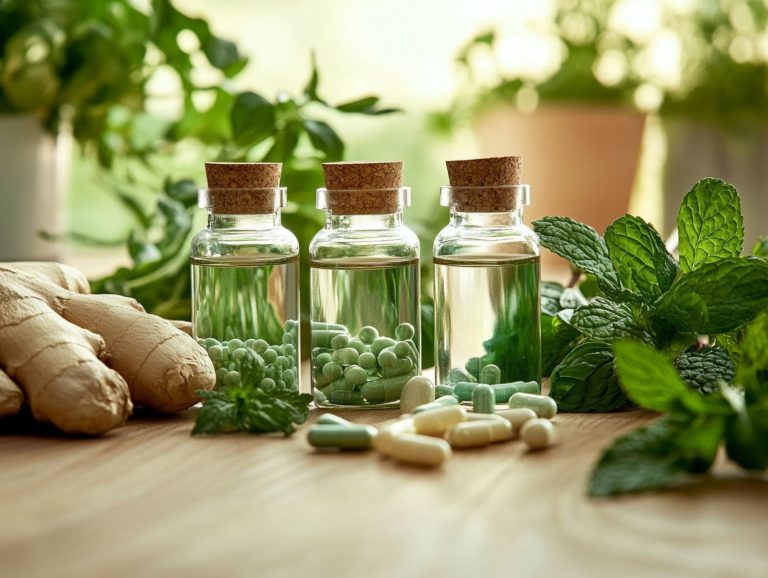How to Use Homeopathy for First Aid
Homeopathy offers an exciting way to enhance your first aid skills with natural remedies designed to support healing and ease discomfort.
This guide delves into popular homeopathic remedies such as Arnica Montana, Calendula Officinalis, and Hypericum Perforatum. It helps you choose the right remedy for different situations.
You ll also find valuable information on safe administration techniques, potential side effects, and critical moments when seeking professional medical assistance is essential.
Whether you re intrigued by homeopathy or aiming to elevate your first aid toolkit, this guide offers insightful knowledge tailored for you.
Contents
- Key Takeaways:
- Common Homeopathic Remedies for First Aid
- How to Use Homeopathy for First Aid
- Safety and Risks of Homeopathy for First Aid
- When to Seek Professional Medical Care
- Frequently Asked Questions
- 1. How do I use homeopathy for first aid?
- 2. What are some common homeopathic remedies for first aid?
- 3. How do I choose the right homeopathic remedy for my first aid needs?
- 4. Can homeopathy be used alongside conventional first aid treatments?
- 5. Are there any safety precautions I should take when using homeopathy for first aid?
- 6. Can homeopathy be used for emergency situations?
Key Takeaways:

- Choose the right remedy: Know the specific symptoms to match with the appropriate homeopathic remedy for effective first aid treatment.
- Be cautious of potential risks: Be aware of potential side effects and drug interactions when using homeopathy for first aid.
- Seek medical attention when necessary: Always seek medical help in serious situations. Your health is too important to risk!
What is Homeopathy?
Homeopathy is a holistic system of medicine founded by Samuel Hahnemann in the late 18th century. It emphasizes the principle of ‘like cures like,’ suggesting that substances causing symptoms in healthy individuals can be used to treat similar symptoms in those who are unwell.
With its reliance on natural substances and the process of diluting and shaking remedies to enhance their healing properties, homeopathy creates remedies that bolster your body s self-healing capabilities and enhance overall immune response.
This innovative approach represents a significant shift from conventional treatments, which often prioritize symptom suppression over true healing. By viewing you as a whole person, homeopathy addresses not just physical ailments but also your emotional and psychological well-being, promoting comprehensive health.
Unlike many standard medical practices that lean heavily on pharmaceuticals, homeopathy taps into your body’s innate ability to recover and strengthen its immune system. This unique perspective allows for personalized treatments tailored to your specific needs, making the practice adaptable and versatile in various healthcare scenarios.
Common Homeopathic Remedies for First Aid
Homeopathic remedies are invaluable assets in first aid, offering effective treatment for a range of injuries, alleviating pain, and providing essential trauma care.
Consider remedies such as:
- Arnica: Helps reduce swelling and pain associated with bruising.
- Hypericum: Effective for nerve injuries and sharp pain.
- Ledum: Ideal for puncture wounds and insect bites.
- Belladonna: Used for fever and associated symptoms.
These solutions not only tackle acute conditions but also help the healing process through natural substances that bolster the body’s inherent immune response.
Arnica Montana
Arnica Montana, a well-regarded homeopathic remedy, is celebrated for its remarkable healing properties when it comes to muscle injuries, bruises, and swelling making it a critical addition to your first aid kit.
Its effectiveness in alleviating pain and reducing inflammation positions it as a preferred choice for those seeking natural solutions for acute injuries. This herbal remedy proves especially advantageous for athletes and anyone engaged in demanding physical activities, as it actively supports the recovery process by enhancing blood circulation and minimizing discomfort.
To harness its benefits, simply apply a topical gel or cream containing Arnica Montana several times a day to the affected area. Its active compounds, renowned for their anti-inflammatory effects, work to soothe soreness and accelerate the healing process by aiding tissue repair.
By integrating such homeopathic practices into your routine, you not only embrace a holistic approach to health but also enable yourself to manage pain effectively, all without solely relying on pharmaceuticals.
Calendula Officinalis
Calendula Officinalis is a remarkable natural remedy that you should keep on hand for its impressive healing properties, especially for treating skin injuries like cuts, burns, and abrasions.
Its anti-inflammatory effects promote natural healing. This also bolsters your immune response, making it an essential addition to any homeopathic kit.
Recognized for its effectiveness, Calendula is available in various forms think ointments, creams, and tinctures allowing you to apply it easily and effectively where needed.
When you apply it directly to the affected area, it encourages rapid cell regeneration and minimizes scarring. It also alleviates discomfort from skin irritations.
Many people have discovered that weaving this natural remedy into their first aid routine speeds up recovery and lessens reliance on synthetic medications.
Its gentle nature makes it suitable for all skin types, which is particularly advantageous for children or anyone with sensitive skin.
Hypericum Perforatum
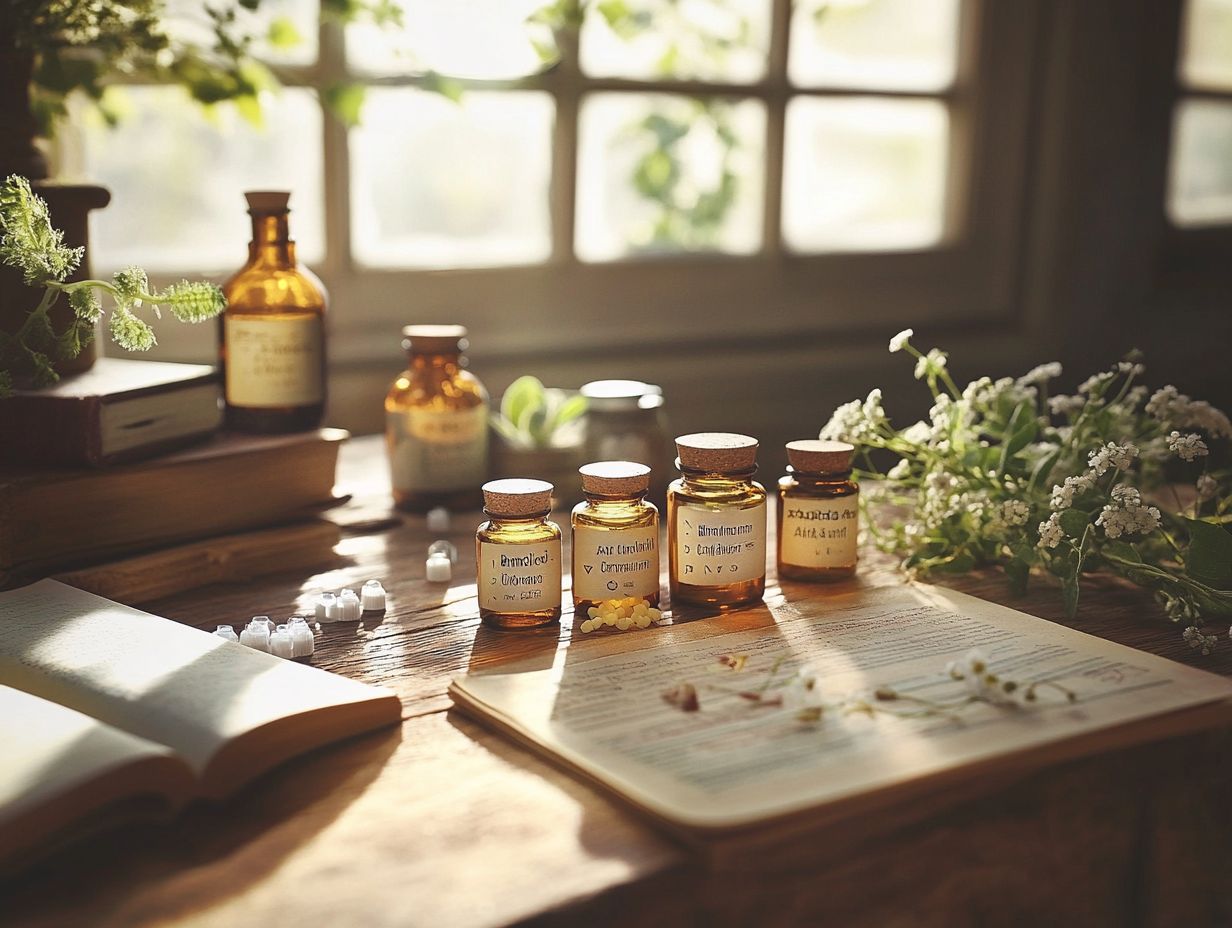
Hypericum Perforatum, widely known as St. John’s Wort, is a cornerstone in homeopathy, particularly for addressing nerve injuries and trauma. Its remarkable pain-relieving properties make it an invaluable addition to your first aid arsenal, especially for falls or impacts.
It helps relieve shock and supports your body’s natural healing process. This herb shines in treating conditions like sciatica a pain that radiates along the sciatic nerve neuropathy, and post-surgical pain, where nerve irritation can lead to considerable discomfort.
If you re grappling with phantom limb pain or chronic issues such as fibromyalgia, you might find relief through its use. By promoting optimal nerve function and enhancing recovery, Hypericum offers an effective alternative in your pain management toolkit.
The experience of limb pain following an injury underscores the importance of taking swift action. With the right first aid approach, you can significantly reduce distress and encourage a healthier outcome.
Using potent natural therapies can truly make a remarkable difference in your recovery journey.
How to Use Homeopathy for First Aid
Utilizing homeopathy for first aid requires a thoughtful and systematic approach to selecting and administering remedies. This ensures that the treatment aligns perfectly with your unique needs.
By grasping the fundamental principles of homeopathic medicine and consulting a reliable homeopathic guidebook, you can significantly elevate the effectiveness of remedies for various acute conditions and injuries.
Choosing the Right Remedy
Choosing the right homeopathic remedy is essential for effective first aid treatment. It requires you to have a solid grasp of your individual symptoms and conditions.
Factors such as the type of injury, the severity of your symptoms, and any unique health considerations significantly influence this selection process.
A practitioner might pay close attention to the intensity of your pain, any inflammation present, and pre-existing health issues that could complicate your treatment options.
This personalized approach guarantees that the remedies selected are pertinent to your immediate condition and harmonious with your overall health profile.
Healthcare professionals skilled in homeopathy leverage their expertise to navigate these intricacies. This ultimately enhances your chances of a swift recovery and improves long-term health outcomes.
Administration and Dosage
Accurate administration and dosage of homeopathic remedies are essential for achieving the desired outcomes in first aid situations. Familiarizing yourself with common dosing instructions and guidelines ensures that you utilize the remedies from your homeopathic kit effectively and safely.
This understanding becomes even more critical when addressing various conditions, as each remedy may require a specific approach. Consider factors such as age, individual sensitivity, and the severity of symptoms when determining the appropriate dosage.
- Generally, adults might take 3-5 pellets of a remedy in a 30C potency, while children may need fewer or diluted doses.
- It s always wise to start with the lowest potency suitable for the condition and observe how the body responds, adjusting as necessary for the best results.
By adhering to these guidelines, you can ensure that homeopathic treatments support healing while minimizing any potential side effects.
Safety and Risks of Homeopathy for First Aid
Homeopathy is generally considered safe. However, it’s crucial to understand the potential risks, side effects, and interactions for effective first aid.
Talking to a doctor can significantly reduce these risks and ensure that you use homeopathic remedies appropriately for both acute and chronic conditions.
Potential Side Effects and Interactions

Homeopathic remedies are usually well-tolerated. However, some individuals may experience side effects or interactions with other medications.
Consulting a healthcare professional before starting any homeopathic treatment, especially in a first aid context, is essential.
While these remedies are generally safe, you might occasionally encounter mild symptoms like nausea, dizziness, or skin reactions.
Your unique health profile and any medications you’re taking can significantly influence how these remedies affect you.
Keep in mind that what benefits one person may pose risks to another, particularly if they re on prescribed medications.
To navigate this landscape effectively, have a thorough discussion with a healthcare provider to ensure a balanced approach.
This way, you can minimize potential adverse effects while maximizing the benefits of homeopathic treatments.
When to Seek Professional Medical Care
Understanding when to seek professional medical care is essential for managing both injuries and illnesses effectively.
This is especially true in cases of acute diseases and chronic conditions where home treatments may fall short.
Pay close attention to signs that indicate the need for medical attention, such as severe pain, persistent symptoms that refuse to improve, and any signs of infection.
Taking these cues seriously can significantly impact your health and well-being.
Indications for Seeking Medical Attention
Several indicators signal when it’s time to seek professional medical attention. These include severe injuries, persistent pain, or worsening symptoms that won t improve despite your home remedies.
It’s vital to catch these signs early on to prevent complications and ensure you receive the appropriate care.
Be vigilant for additional symptoms like difficulty breathing, sudden dizziness, or intense headaches.
Watch out for chest pain or any unusual bleeding, as these could point to life-threatening conditions.
Understanding these critical signs can significantly influence outcomes, highlighting the importance of seeking timely medical intervention.
In cases involving fractures, burns, or head injuries, the need for a professional evaluation is paramount.
Recognizing these variations enables you and those around you to take immediate action, safeguarding your health and well-being in emergency situations.
Frequently Asked Questions
1. How do I use homeopathy for first aid?
Homeopathy for first aid involves using diluted natural substances to treat minor injuries and ailments. The remedies can be taken orally or applied topically, depending on the type of injury or condition.
2. What are some common homeopathic remedies for first aid?

Some common homeopathic remedies for first aid include Arnica for bruises and muscle soreness, Calendula for wound healing, and Hypericum for nerve pain. These are just a few examples, as many more remedies are available for different first aid situations.
3. How do I choose the right homeopathic remedy for my first aid needs?
The best way to choose the right homeopathic remedy for first aid is to consult with a trained homeopath or refer to a reliable homeopathy guidebook.
The remedies should be chosen based on the specific symptoms and characteristics of the injury or condition.
4. Can homeopathy be used alongside conventional first aid treatments?
Yes, homeopathy can be used alongside conventional first aid treatments. In fact, combining both approaches is often recommended for a more holistic and effective treatment.
However, it’s important to consult with a healthcare professional before combining treatments.
Explore homeopathy today for a natural first aid approach!
5. Are there any safety precautions I should take when using homeopathy for first aid?
Using homeopathy for first aid requires care. Always follow instructions closely.
If you have health issues or take other medications, consult a healthcare professional.
6. Can homeopathy be used for emergency situations?
Homeopathy can help in emergencies, but it isn t a substitute for medical care. In serious situations, seek immediate medical attention.
Homeopathy can support and enhance conventional emergency treatments.
